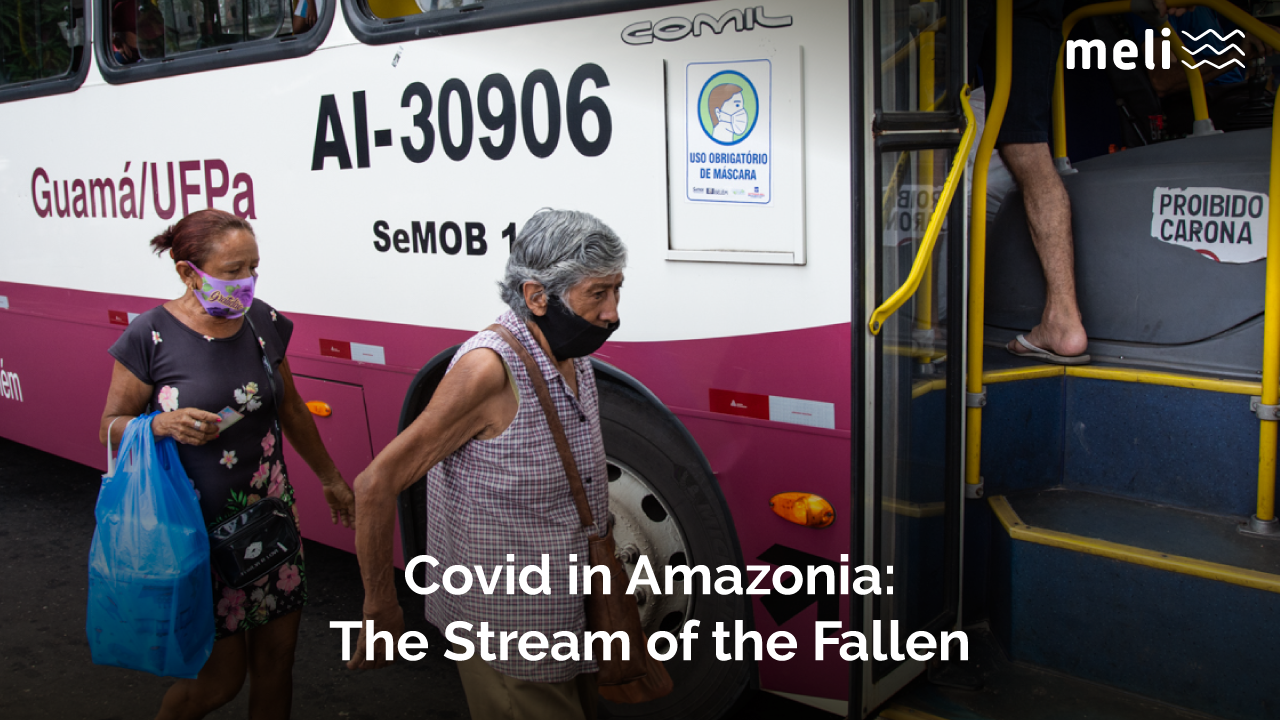Image: Cícero Pedrosa Neto/ Amazônia Real
Overview of the “civil war” fought in the Amazon against the coronavirus and the fascist government that propagates it.
Author: Gabriel Costa
Leia em português.
There is a monument in Spain called “Valley of the Fallen”. It was erected in honour of the dead of the biggest Spanish armed conflict, the Civil War of 1936-1939. The conflict was won by the fascists, led by General Francisco Franco. Today the monument is undergoing a process of a “cleanup” where the fascist legacy is erased and given meanings more in keeping with Spanish democracy.
But what does Covid in Amazonia have to do with that? Well, in my opinion, everything. We are also fighting a civil war here, a much more insidious one, no longer fought with bombs or rifles, but with masks, vaccines and viruses. The fascists in power strike again brutally in their war against the most poor. We have our own Francisco Franco in the figure of a president, who is also an ex-military man, also supported by religious denominations, also a traditionalist and also fond of civil war. His government uses the same slogans as the Spanish counterpart, “God, Homeland and Family”.
The central idea of the presidential policy is this: Let a large part of the population become infected and rely on a supposed natural immunity of people after infection, the famous concept of “herd immunity”. This idea is fundamentally flawed, since natural immunity to the virus has not been shown to last. It also fails because it is a government strategy that admits that a few thousand people will die in order for this immunity to be achieved. It will not be long before we erect our own monument, “O Igarapé dos Caidos”, or the Stream of the Fallen, since valleys are hardly present in Amazonian geography.
In our already impoverished region, which has one of the lowest socio-economic indices, this strategy is brutal, social distancing along European lines a distant utopia. The federal government has been sabotaging all measures at the local, state and municipal levels. Affecting especially the poorest populations, forced to expose themselves and purposely left without means of survival, having as encouragement only “fake news” and promises of miracle cures, without any scientific backing, in the form of a series of treatments know as “covid kit” distributed by the Ministry of Health itself.
The news from our home front
The Brazilian Amazon is by far one of the most affected regions. Manaus, the state of Amazonas’ largest city, has suffered hell on earth twice. As symbolic as the bombing of Guernica in Spain was the lack of oxygen, predicted weeks in advance by the corresponding service provider, during the last peak of the disease in February and March this year. Also symbolic were the mass graves opened to bury the mass dead. As Manaus collapsed, so did Amazonas, since almost all the state’s ICU beds were concentrated in the city. Besides the 354,000 cases, the almost 13,000 deaths and a lethality rate of approximately 3.5%, the state cultivated the necessary conditions for the emergence of new “forms” or variants of the virus. The feared P1 variant was detected for the first time in people coming from the city that concentrates two factors for the evolution of a virus that escapes immunity: high rates of infection by the disease and total lack of control of the circulation of people.
The situation in other states is not the best either: Amapá recently surpassed the 100,000 cases mark, with approximately 1,400 deaths and a lethality rate of 1.3%. Last year, the state also faced a major blackout that lasted more than 20 days and left much of the state without electricity and water. Acre, on the other hand, concentrates 60 thousand cases and approximately 1100 deaths. This year alone, the state has had to deal with an epidemic of dengue fever with more than 1500 cases, catastrophic flooding that inundated cities such as Cruzeiro do Sul and a migratory crisis on the border with Peru, where Haitian immigrants tried to leave Brazil, but were prevented by the Peruvian police and are now left to their own devices in precarious camps on the border. Rondônia has 194,000 cases, with approximately 4,500 deaths, Roraima has approximately 91,000 cases, with 1,400 deaths, and Tocantins has 145,000 cases with 2,200 deaths.
Especially in Pará, there are already almost 11,000 deaths, with 430,000 confirmed cases since the beginning of the pandemic. According to data from the State Health Secretariat, the cases are concentrated in five municipalities: Belém, Parauapebas, Santarém, Ananindeua and Marabá. The bulk of the cases and deaths affected mainly pardo/brown men, one of the most historically neglected groups of Pará’s society.
At the moment, the entire state is in a so-called red phase, with several cities, including the capital, Belém, going in or out of “lockdown”. A precarious lockdown, where only 50% of the population has remained at home. Other cities in the southeast region of the state, such as Parauapebas, Canaã dos Carajás, Altamira and my hometown, Marabá, are witnessing the same amidst a collapse of the funerary and health systems with only 94 vacant ICU beds across the state.
In health units throughout the region, scenes equal to a disaster movie unfold, with the cries of patients mixed with the despair of health professionals, who are forced to endure a degrading work routine, treating patients in an improvised manner in waiting chairs, stretchers, plastic chairs, doubling or tripling oxygen points. Due to the extensive geography of the region, patients are often forced to travel endless hours in agony, by boat or bus, from smaller towns in the countryside to the major regional hubs of care.
There is a lack of material for the manufacture of coffins. In Belém, the city’s only public cemetery is exhuming remains unclaimed by families to make room for the miserable constant demand for coffins. The heavy words of one of the gravediggers illustrate the situation: “We cry behind our masks”.
Our counterattack
The situation in the state and in the region is complicated. But we still resist. The state of Pará adopted possible closure measures, and instituted a package of resources that is supposed to inject 500 million reais into the local economy. It also created a cash transfer package to help various population groups, such as street vendors and waiters, worth up to 500 reais, and increased other social programmes of the Federal Government with the “Pará income”, which allocates 100 reais to families already assisted by the bolsa família programme, which provides financial aid to poor families. In Belém, another programme headed by the municipality, called “Bora Belém” (Let’s go, Belém), also started its payment of up to 400 reais to families not assisted by any other social programme.
While vaccination is also progressing, Amazonas is the state that has vaccinated the most in the region, having already applied, between the first and second doses, around 600,000 thousand vaccines, However, the pace is still slow in Pará, one of the states that has received the least doses of vaccines. The situation was partially reversed on the second with the arrival of new doses that now add up to 1,331,090 doses. Belém was the first Brazilian capital to vaccinate the elderly up to 60 years of age. In the countryside, several municipalities have started vaccinating older people of 60 or more years of age.
While the vaccine is not being delivered in sufficient quantities and the number of hospitalized people is not normalizing, the reader of this article can help a lot by avoiding crowds, wearing masks, especially FFP2 masks (link below), demanding more from public authorities and fighting the many “fake news” circulating in social networks. Help us in this fight, and as the Spanish Republicans would say, neither the coronavirus nor the fascists shall not pass.
References:
Numbers of beds, deaths and cases in Pará
Vaccine status
Financial aid
Financial aid
FFP2 masks and how to protect yourself
Covid data
The Valley of the Fallen
Your donation can impact the world positively!
Subscribe to receive our Newsletter!
Find us also at Linkedin, Facebook, Twitter
or Instagram
www.meli-bees.org
❤️


2 Replies to “Covid in Amazonia: The Stream of the Fallen”